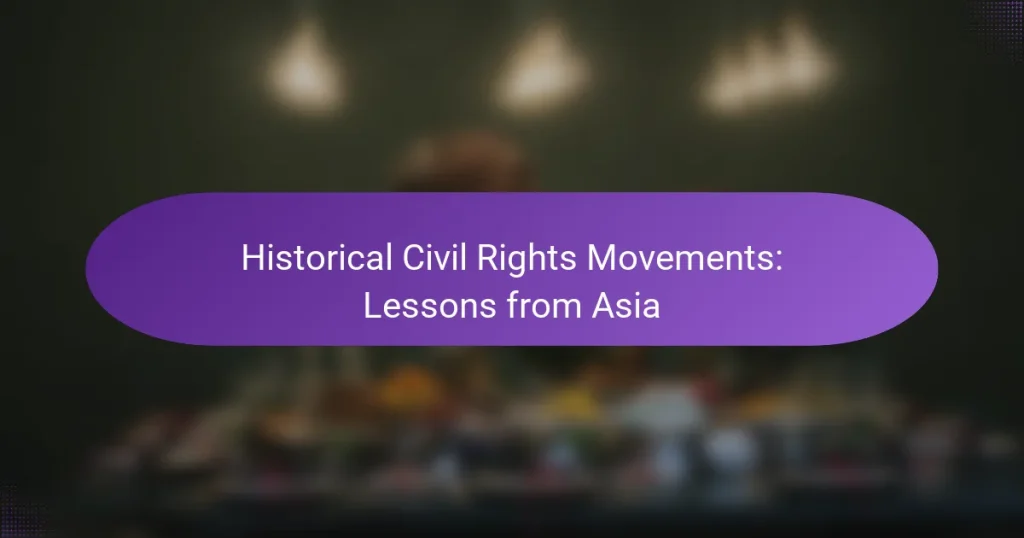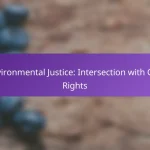The historical civil rights movements in Asia offer valuable lessons in grassroots activism, coalition building, and non-violent resistance. Notably, the Indian Independence Movement, spearheaded by Mahatma Gandhi, showcased the power of peaceful protest in challenging oppression. Additionally, women played a pivotal role in these movements, advocating for both civil rights and gender equality, thereby shaping the trajectory of social change across the region.
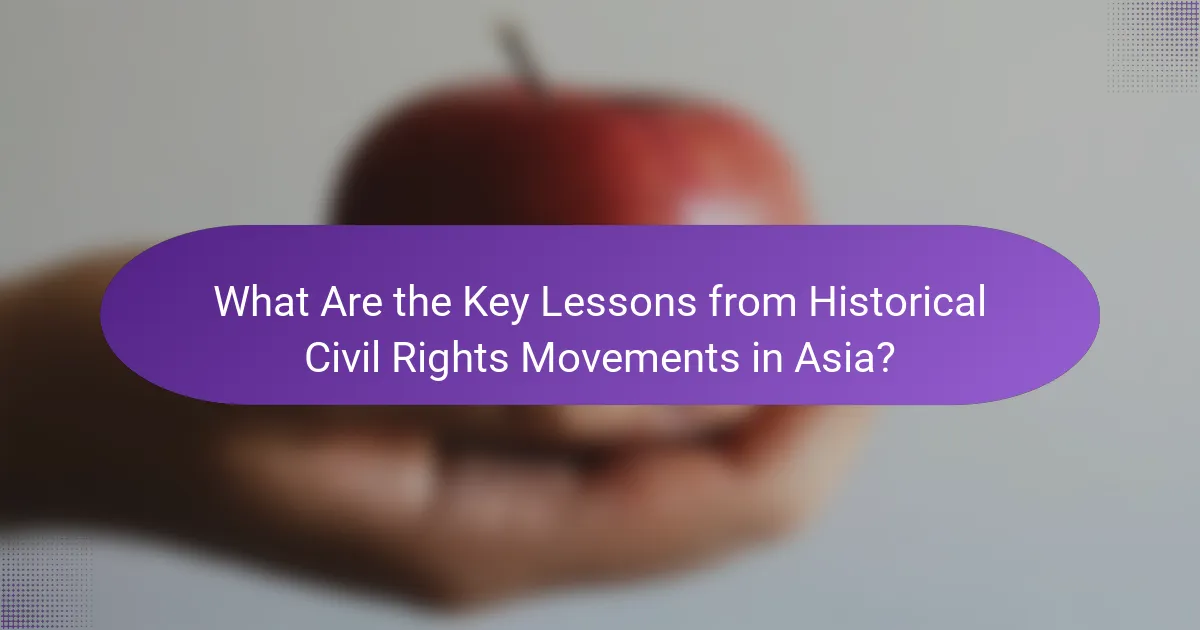
What Are the Key Lessons from Historical Civil Rights Movements in Asia?
Key lessons from historical civil rights movements in Asia include the significance of grassroots activism, the necessity of coalition building, and the effectiveness of non-violent resistance. These elements have proven essential in mobilizing communities and achieving social change across various nations.
Empowerment through grassroots activism
Grassroots activism has been a powerful tool in civil rights movements throughout Asia, enabling ordinary citizens to take charge of their struggles. By organizing at the community level, activists can address local issues effectively and create a strong support network. For instance, movements in India and the Philippines have demonstrated how local engagement can lead to significant national reforms.
To empower grassroots efforts, it is crucial to foster community involvement and ensure that voices from all demographics are heard. This can be achieved through workshops, town hall meetings, and social media campaigns that encourage participation and raise awareness about civil rights issues.
Importance of coalition building
Coalition building is vital for amplifying the impact of civil rights movements in Asia. By uniting diverse groups with shared goals, activists can pool resources, knowledge, and influence, making their efforts more effective. Successful coalitions often include various stakeholders, such as NGOs, labor unions, and student organizations, which can broaden the movement’s reach.
When forming coalitions, it is essential to establish clear communication and shared objectives among all parties involved. This helps to maintain focus and unity, preventing fragmentation that can weaken the movement. Regular meetings and collaborative projects can strengthen these alliances and enhance overall effectiveness.
Role of non-violent resistance
Non-violent resistance has played a crucial role in many Asian civil rights movements, demonstrating that peaceful methods can lead to significant change. Techniques such as protests, sit-ins, and boycotts have been effectively employed to challenge oppressive systems without resorting to violence. The success of non-violent movements in countries like India and South Korea illustrates the power of this approach.
To implement non-violent resistance successfully, it is important to prepare participants through training and education on peaceful protest strategies. Additionally, maintaining a strong public presence and garnering media attention can help to amplify the movement’s message and attract wider support.
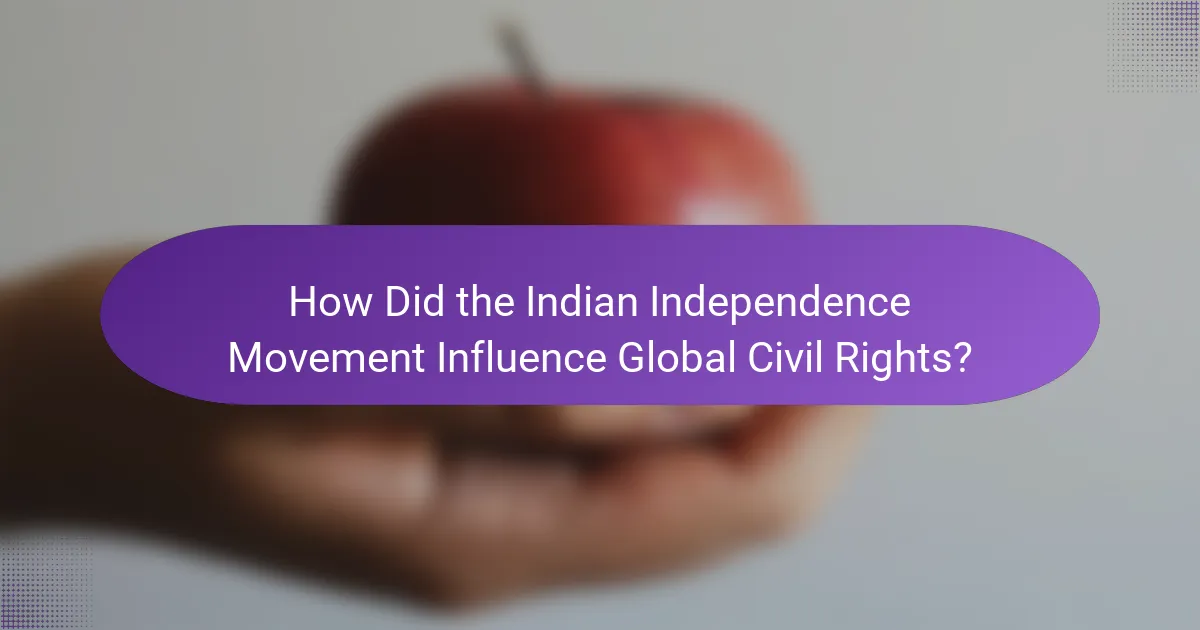
How Did the Indian Independence Movement Influence Global Civil Rights?
The Indian Independence Movement, led by figures like Mahatma Gandhi, significantly shaped global civil rights by promoting non-violent resistance as a powerful tool for social change. Its principles inspired movements worldwide, demonstrating that peaceful protest could effectively challenge oppression and injustice.
Non-violent strategies by Mahatma Gandhi
Mahatma Gandhi’s non-violent strategies, known as Satyagraha, emphasized civil disobedience and peaceful resistance. He advocated for methods such as boycotts, marches, and fasting to confront colonial rule without resorting to violence. This approach not only mobilized millions in India but also showcased the effectiveness of peaceful protest in achieving political goals.
One notable example is the Salt March of 1930, where Gandhi led thousands to the Arabian Sea to produce salt, defying British laws. This act of civil disobedience galvanized public support and drew international attention to India’s struggle for independence.
Impact on civil rights leaders worldwide
The principles of non-violent resistance championed by Gandhi influenced numerous civil rights leaders across the globe. Figures such as Martin Luther King Jr. in the United States and Nelson Mandela in South Africa adopted these strategies in their own struggles against racial injustice and oppression. They recognized that peaceful methods could unite people and draw attention to their causes.
For instance, King’s philosophy of non-violence was directly inspired by Gandhi’s teachings, which he applied during the American civil rights movement in the 1950s and 1960s. This connection illustrates how the Indian Independence Movement provided a framework for activists seeking social change in diverse contexts.
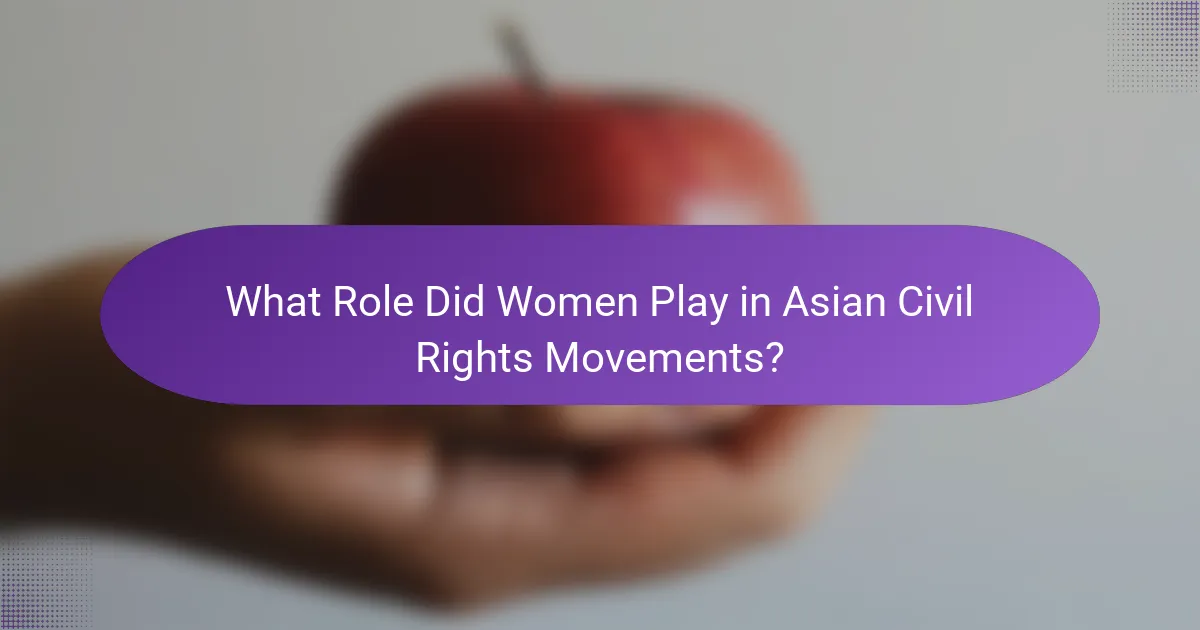
What Role Did Women Play in Asian Civil Rights Movements?
Women played a crucial role in Asian civil rights movements, often serving as leaders, organizers, and advocates for social change. Their contributions were vital in shaping the direction and success of these movements, highlighting issues of gender equality alongside broader civil rights goals.
Leadership in protests and movements
Women have frequently taken on leadership roles in various Asian civil rights movements, from the suffrage movements in Japan to the anti-colonial struggles in India. Figures like Aung San Suu Kyi in Myanmar and Malala Yousafzai in Pakistan exemplify how women have led protests and mobilized communities for change.
These leaders often faced significant challenges, including societal expectations and political repression. However, their determination and resilience have inspired many others to join the fight for civil rights, demonstrating the power of female leadership in social movements.
Advocacy for gender equality
Women in Asian civil rights movements have consistently advocated for gender equality as a fundamental aspect of broader social justice. This advocacy has included fighting against practices such as child marriage, domestic violence, and gender-based discrimination in education and employment.
Organizations led by women have emerged across the region, focusing on legal reforms and raising awareness about women’s rights. For instance, campaigns in countries like India and Bangladesh have successfully pushed for stricter laws against domestic violence, showcasing the intersection of civil rights and gender equality.
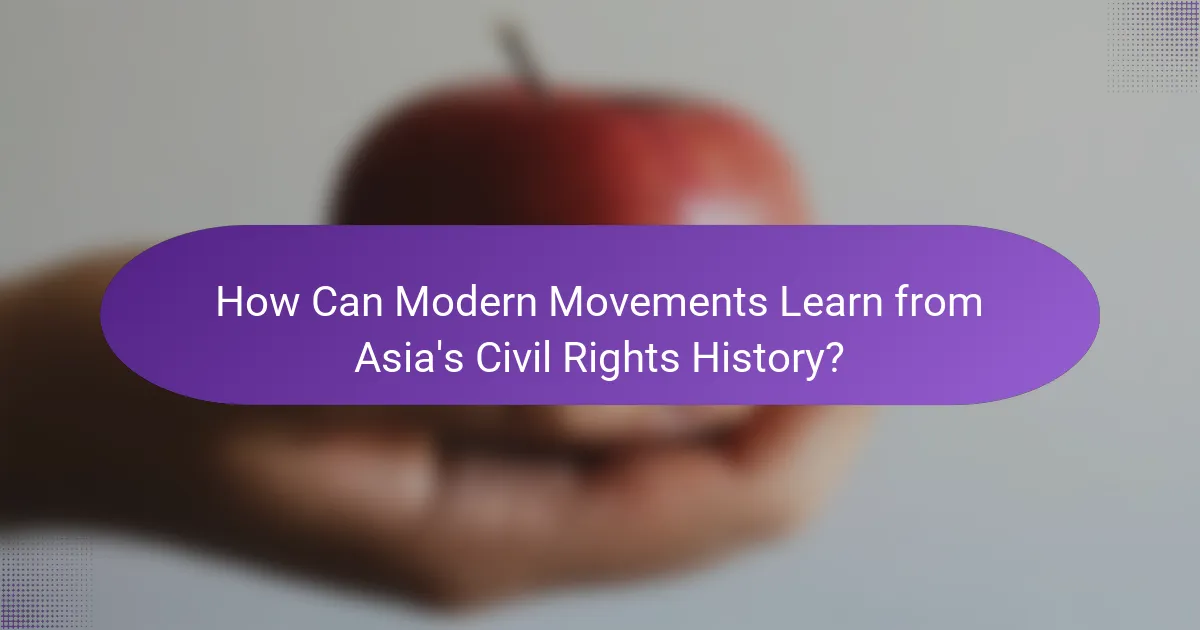
How Can Modern Movements Learn from Asia’s Civil Rights History?
Modern movements can draw valuable lessons from Asia’s civil rights history by embracing inclusive strategies and leveraging technology for mobilization. These approaches have proven effective in fostering unity and amplifying voices across diverse communities.
Adopting inclusive strategies
Inclusive strategies are essential for modern movements to ensure that all voices are represented and heard. This means actively engaging with marginalized groups and understanding their unique challenges. For example, movements in India have successfully incorporated the perspectives of Dalits and tribal communities, leading to more comprehensive advocacy.
To adopt inclusive strategies, movements should prioritize outreach efforts that connect with various demographics. This can include hosting community forums, utilizing interpreters for language accessibility, and forming coalitions with local organizations. By doing so, movements can create a more unified front that reflects the diversity of the population.
Utilizing social media for mobilization
Social media serves as a powerful tool for mobilization, allowing movements to quickly disseminate information and rally support. Platforms like Twitter, Facebook, and Instagram can amplify messages, reach wider audiences, and facilitate real-time communication. For instance, the Hong Kong protests effectively used social media to organize events and share updates with supporters globally.
To maximize the impact of social media, movements should develop clear messaging and engage with followers regularly. This includes sharing personal stories, creating shareable content, and using hashtags to unify discussions. However, it is crucial to remain vigilant against misinformation and ensure that the narrative remains focused and accurate.
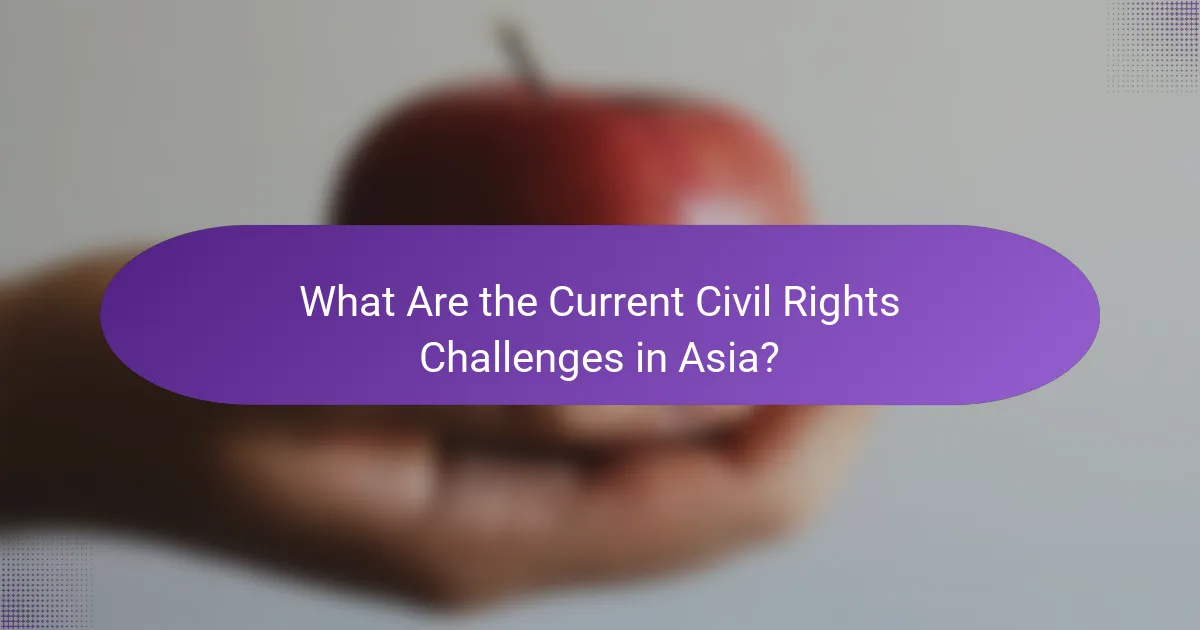
What Are the Current Civil Rights Challenges in Asia?
Asia faces a variety of civil rights challenges, including ethnic discrimination, restrictions on freedom of expression, and issues related to gender equality. These challenges are often deeply rooted in historical contexts and vary significantly across different countries in the region.
Ethnic discrimination in Myanmar
Ethnic discrimination in Myanmar is a pressing issue, particularly affecting the Rohingya population, who face systemic persecution and violence. This discrimination is often justified by the government through nationalistic narratives that deny the Rohingya’s citizenship and basic rights.
Efforts to address ethnic discrimination have been met with resistance, and international responses have included sanctions and calls for accountability. However, local advocacy groups continue to work towards raising awareness and promoting human rights for all ethnic communities.
Freedom of expression in China
Freedom of expression in China is severely restricted, with the government employing extensive censorship and surveillance to control public discourse. Citizens face significant risks for voicing dissent, including harassment, detention, or worse.
Online platforms are heavily monitored, and many social media posts are deleted or blocked. Activists and journalists often resort to creative methods to bypass censorship, but the environment remains hostile to free speech, making it crucial for individuals to stay informed about the legal landscape and potential repercussions of their expressions.
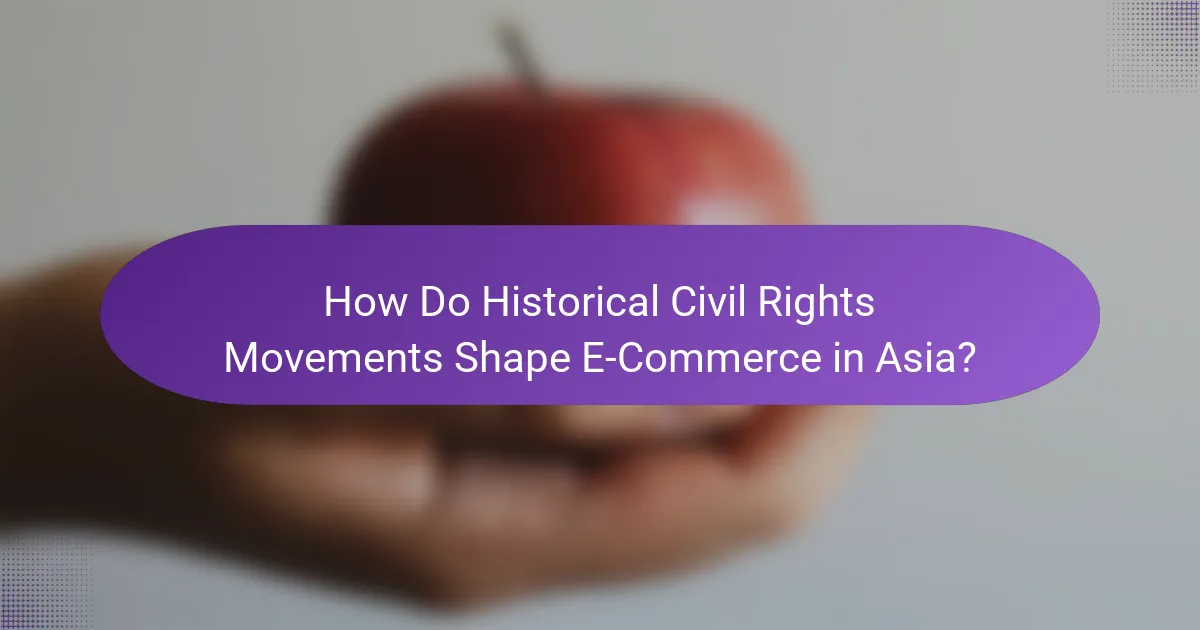
How Do Historical Civil Rights Movements Shape E-Commerce in Asia?
Historical civil rights movements in Asia have significantly influenced the landscape of e-commerce by promoting ethical practices and consumer awareness. These movements have fostered a culture where businesses are increasingly held accountable for their sourcing and labor practices, impacting consumer choices and market dynamics.
Ethical sourcing and fair trade
Ethical sourcing and fair trade have become essential components of e-commerce in Asia, driven by consumer demand for transparency and social responsibility. Companies are now expected to ensure that their products are sourced from suppliers who adhere to fair labor practices and environmental sustainability.
For instance, brands that engage in fair trade often pay their workers a premium above the market rate, which can range from 10-50% more, depending on the product and region. This practice not only supports local economies but also enhances brand loyalty among consumers who prioritize ethical considerations.
Consumer activism for social justice
Consumer activism for social justice has gained momentum in Asia, with e-commerce platforms becoming battlegrounds for social issues. Shoppers are increasingly using their purchasing power to support businesses that align with their values, such as those promoting gender equality or environmental protection.
Examples include campaigns where consumers boycott brands that fail to address labor rights violations or environmental concerns. E-commerce companies are responding by implementing policies that reflect social justice principles, such as donating a portion of sales to relevant causes or ensuring diverse representation in their marketing efforts.
